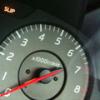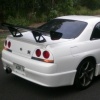Novice Tuning Question
Announcements
-
Similar Content
-
Latest Posts
-
I've been quietly following this thread for ages, but this one got me. Since my ADHD diagnosis (and associated learnings and prescription) I'm way less inclined to wade into forum yarns when there are better things to do with my time, as half the time I'd end up in some kind of forum debate even if that wasn't my intention. I've not lost the ADHD "superpowers", just am a lot better at directing my hyperfocus into slightly more constructive things, but haven't stopped quietly lurking in here in my spare time.
-
Stripped the tank down and gave it a good scrub. It came up really good! Not sure if I'll just put it back in like that or give it a blackening treatment (such as Bowdens The Black Box). That might give it a matte look so might just run it as is.
-
@MBS206 Ha ha, yeah ADHD is a daily battle to not get drawn in to doing things you want to do that you know you shouldn't do! Every single time I walk into my shed I end up doing something I started the day having zero intention of doing! I keep mentioning the 1 step forward, 3 steps back scenario and I'm tipping people that are blessed with ADHD (yes, blessed) are the worst at that!
-
By GabsReDeal · Posted
We import a lot of cars from Japan. I'd say that approximately 20% of our traffic is imported JDM cars (mainly consumer cars like the Mazda Demio, Toyota Yaris, Honda Fit, Suzuki Swift, etc.). We also import a lot from the UK, but this has decreased after Brexit. Apart from the consumer vehicles, two of the larger, well-known dealerships frequently import iconic '80s/'90s JDM cars. I haven't heard of anyone importing from Australia, and they are not advertised (unlike Japanese ones), despite a lot of Maltese migrating to Australia in the '50s and '60s. -
Looking good man, dash mash is smart to ensure you don't get the dreaded bubble.
-







Recommended Posts
Create an account or sign in to comment
You need to be a member in order to leave a comment
Create an account
Sign up for a new account in our community. It's easy!
Register a new accountSign in
Already have an account? Sign in here.
Sign In Now